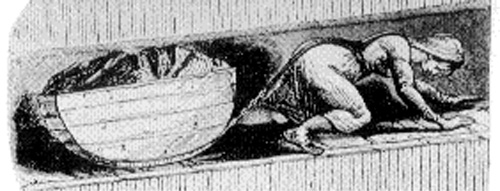Child labour in eighteenth century London
Historian article

On 1 March 1771, thirteen year-old John Davies, a London charity school boy, left his home in Half MoonAlley and made his way to Bishopsgate Street. There he joined thirteen other boys of similar age who, like him, were new recruits of the Marine Society, a charity that sent poor boys to sea. Unlike John, the other boys had not enlisted straight from school. JamesAinsworth had worked for his father, a watchmaker, and William Peckham had been a labourer at the tile kilns in the brickfields where his father was employed. Two of the recruits had drawn beer in alehouses, two had run errands and one had been a farmer's boy. William Danzey, aged seventeen and the oldest, had worked on the river at Henley-on-Thames. Robert Brown and John McKensey, although not from sea-faring families, had already been to sea. The Marine Society did not recruit apprentices unless they had been officially discharged so Richard Tilman, apprenticed to a breeches maker, and Thomas Edwards both had their indentures delivered up so they were eligible to enroll. Edward Thomas, the only recruit who was not a Londoner, had recently arrived in the capital from Gloucester with a recommendation to join the Marine Society to begin a career at sea.
During the eighteenth century, London's population, trade, industry and commerce expanded and developed rapidly. Thousands of children were born into the poor communities...
This resource is FREE for Historian HA Members.
Non HA Members can get instant access for £2.75

